-
EXECUTIVE SUMMARY
-
Market Overview
-
Key Findings
-
Market Segmentation
-
Competitive Landscape
-
Challenges and Opportunities
-
Future Outlook
-
MARKET INTRODUCTION
-
Definition
-
Scope of the study
- Research Objective
- Assumption
- Limitations
-
RESEARCH METHODOLOGY
-
Overview
-
Data Mining
-
Secondary Research
-
Primary Research
- Primary Interviews and Information Gathering Process
- Breakdown of Primary Respondents
-
Forecasting Model
-
Market Size Estimation
- Bottom-Up Approach
- Top-Down Approach
-
Data Triangulation
-
Validation
-
MARKET DYNAMICS
-
Overview
-
Drivers
-
Restraints
-
Opportunities
-
MARKET FACTOR ANALYSIS
-
Value chain Analysis
-
Porter's Five Forces Analysis
- Bargaining Power of Suppliers
- Bargaining Power of Buyers
- Threat of New Entrants
- Threat of Substitutes
- Intensity of Rivalry
-
COVID-19 Impact Analysis
- Market Impact Analysis
- Regional Impact
- Opportunity and Threat Analysis
-
SENSOR FUSION MARKET, BY TECHNOLOGY (USD BILLION)
-
Software based
-
Hardware based
-
Hybrid systems
-
SENSOR FUSION MARKET, BY APPLICATION (USD BILLION)
-
Automotive
-
Aerospace
-
Industrial Automation
-
Consumer Electronics
-
Healthcare
-
SENSOR FUSION MARKET, BY SENSOR TYPE (USD BILLION)
-
Inertial Sensors
-
Geospatial Sensors
-
Temperature Sensors
-
Vision Sensors
-
Sound Sensors
-
SENSOR FUSION MARKET, BY END USE (USD BILLION)
-
Military
-
Commercial
-
Residential
-
SENSOR FUSION MARKET, BY REGIONAL (USD BILLION)
-
North America
- US
- Canada
-
Europe
- Germany
- UK
- France
- Russia
- Italy
- Spain
- Rest of Europe
-
APAC
- China
- India
- Japan
- South Korea
- Malaysia
- Thailand
- Indonesia
- Rest of APAC
-
South America
- Brazil
- Mexico
- Argentina
- Rest of South America
-
MEA
- GCC Countries
- South Africa
- Rest of MEA
-
COMPETITIVE LANDSCAPE
-
Overview
-
Competitive Analysis
-
Market share Analysis
-
Major Growth Strategy in the Sensor Fusion Market
-
Competitive Benchmarking
-
Leading Players in Terms of Number of Developments in the Sensor Fusion Market
-
Key developments and growth strategies
- New Product Launch/Service Deployment
- Merger & Acquisitions
- Joint Ventures
-
Major Players Financial Matrix
- Sales and Operating Income
- Major Players R&D Expenditure. 2023
-
COMPANY PROFILES
-
OmniVision Technologies
- Financial Overview
- Products Offered
- Key Developments
- SWOT Analysis
- Key Strategies
-
NVIDIA
- Financial Overview
- Products Offered
- Key Developments
- SWOT Analysis
- Key Strategies
-
Intel
- Financial Overview
- Products Offered
- Key Developments
- SWOT Analysis
- Key Strategies
-
Honeywell
- Financial Overview
- Products Offered
- Key Developments
- SWOT Analysis
- Key Strategies
-
Murata Manufacturing
- Financial Overview
- Products Offered
- Key Developments
- SWOT Analysis
- Key Strategies
-
Texas Instruments
- Financial Overview
- Products Offered
- Key Developments
- SWOT Analysis
- Key Strategies
-
Maxim Integrated
- Financial Overview
- Products Offered
- Key Developments
- SWOT Analysis
- Key Strategies
-
Analog Devices
- Financial Overview
- Products Offered
- Key Developments
- SWOT Analysis
- Key Strategies
-
Siemens
- Financial Overview
- Products Offered
- Key Developments
- SWOT Analysis
- Key Strategies
-
Toshiba
- Financial Overview
- Products Offered
- Key Developments
- SWOT Analysis
- Key Strategies
-
STMicroelectronics
- Financial Overview
- Products Offered
- Key Developments
- SWOT Analysis
- Key Strategies
-
Xilinx
- Financial Overview
- Products Offered
- Key Developments
- SWOT Analysis
- Key Strategies
-
Robert Bosch
- Financial Overview
- Products Offered
- Key Developments
- SWOT Analysis
- Key Strategies
-
Infineon Technologies
- Financial Overview
- Products Offered
- Key Developments
- SWOT Analysis
- Key Strategies
-
Qualcomm
- Financial Overview
- Products Offered
- Key Developments
- SWOT Analysis
- Key Strategies
-
APPENDIX
-
References
-
Related Reports
-
LIST OF TABLES
-
LIST OF ASSUMPTIONS
-
NORTH AMERICA SENSOR FUSION MARKET SIZE ESTIMATES & FORECAST, BY TECHNOLOGY, 2019-2035 (USD BILLIONS)
-
NORTH AMERICA SENSOR FUSION MARKET SIZE ESTIMATES & FORECAST, BY APPLICATION, 2019-2035 (USD BILLIONS)
-
NORTH AMERICA SENSOR FUSION MARKET SIZE ESTIMATES & FORECAST, BY SENSOR TYPE, 2019-2035 (USD BILLIONS)
-
NORTH AMERICA SENSOR FUSION MARKET SIZE ESTIMATES & FORECAST, BY END USE, 2019-2035 (USD BILLIONS)
-
NORTH AMERICA SENSOR FUSION MARKET SIZE ESTIMATES & FORECAST, BY REGIONAL, 2019-2035 (USD BILLIONS)
-
US SENSOR FUSION MARKET SIZE ESTIMATES & FORECAST, BY TECHNOLOGY, 2019-2035 (USD BILLIONS)
-
US SENSOR FUSION MARKET SIZE ESTIMATES & FORECAST, BY APPLICATION, 2019-2035 (USD BILLIONS)
-
US SENSOR FUSION MARKET SIZE ESTIMATES & FORECAST, BY SENSOR TYPE, 2019-2035 (USD BILLIONS)
-
US SENSOR FUSION MARKET SIZE ESTIMATES & FORECAST, BY END USE, 2019-2035 (USD BILLIONS)
-
US SENSOR FUSION MARKET SIZE ESTIMATES & FORECAST, BY REGIONAL, 2019-2035 (USD BILLIONS)
-
CANADA SENSOR FUSION MARKET SIZE ESTIMATES & FORECAST, BY TECHNOLOGY, 2019-2035 (USD BILLIONS)
-
CANADA SENSOR FUSION MARKET SIZE ESTIMATES & FORECAST, BY APPLICATION, 2019-2035 (USD BILLIONS)
-
CANADA SENSOR FUSION MARKET SIZE ESTIMATES & FORECAST, BY SENSOR TYPE, 2019-2035 (USD BILLIONS)
-
CANADA SENSOR FUSION MARKET SIZE ESTIMATES & FORECAST, BY END USE, 2019-2035 (USD BILLIONS)
-
CANADA SENSOR FUSION MARKET SIZE ESTIMATES & FORECAST, BY REGIONAL, 2019-2035 (USD BILLIONS)
-
EUROPE SENSOR FUSION MARKET SIZE ESTIMATES & FORECAST, BY TECHNOLOGY, 2019-2035 (USD BILLIONS)
-
EUROPE SENSOR FUSION MARKET SIZE ESTIMATES & FORECAST, BY APPLICATION, 2019-2035 (USD BILLIONS)
-
EUROPE SENSOR FUSION MARKET SIZE ESTIMATES & FORECAST, BY SENSOR TYPE, 2019-2035 (USD BILLIONS)
-
EUROPE SENSOR FUSION MARKET SIZE ESTIMATES & FORECAST, BY END USE, 2019-2035 (USD BILLIONS)
-
EUROPE SENSOR FUSION MARKET SIZE ESTIMATES & FORECAST, BY REGIONAL, 2019-2035 (USD BILLIONS)
-
GERMANY SENSOR FUSION MARKET SIZE ESTIMATES & FORECAST, BY TECHNOLOGY, 2019-2035 (USD BILLIONS)
-
GERMANY SENSOR FUSION MARKET SIZE ESTIMATES & FORECAST, BY APPLICATION, 2019-2035 (USD BILLIONS)
-
GERMANY SENSOR FUSION MARKET SIZE ESTIMATES & FORECAST, BY SENSOR TYPE, 2019-2035 (USD BILLIONS)
-
GERMANY SENSOR FUSION MARKET SIZE ESTIMATES & FORECAST, BY END USE, 2019-2035 (USD BILLIONS)
-
GERMANY SENSOR FUSION MARKET SIZE ESTIMATES & FORECAST, BY REGIONAL, 2019-2035 (USD BILLIONS)
-
UK SENSOR FUSION MARKET SIZE ESTIMATES & FORECAST, BY TECHNOLOGY, 2019-2035 (USD BILLIONS)
-
UK SENSOR FUSION MARKET SIZE ESTIMATES & FORECAST, BY APPLICATION, 2019-2035 (USD BILLIONS)
-
UK SENSOR FUSION MARKET SIZE ESTIMATES & FORECAST, BY SENSOR TYPE, 2019-2035 (USD BILLIONS)
-
UK SENSOR FUSION MARKET SIZE ESTIMATES & FORECAST, BY END USE, 2019-2035 (USD BILLIONS)
-
UK SENSOR FUSION MARKET SIZE ESTIMATES & FORECAST, BY REGIONAL, 2019-2035 (USD BILLIONS)
-
FRANCE SENSOR FUSION MARKET SIZE ESTIMATES & FORECAST, BY TECHNOLOGY, 2019-2035 (USD BILLIONS)
-
FRANCE SENSOR FUSION MARKET SIZE ESTIMATES & FORECAST, BY APPLICATION, 2019-2035 (USD BILLIONS)
-
FRANCE SENSOR FUSION MARKET SIZE ESTIMATES & FORECAST, BY SENSOR TYPE, 2019-2035 (USD BILLIONS)
-
FRANCE SENSOR FUSION MARKET SIZE ESTIMATES & FORECAST, BY END USE, 2019-2035 (USD BILLIONS)
-
FRANCE SENSOR FUSION MARKET SIZE ESTIMATES & FORECAST, BY REGIONAL, 2019-2035 (USD BILLIONS)
-
RUSSIA SENSOR FUSION MARKET SIZE ESTIMATES & FORECAST, BY TECHNOLOGY, 2019-2035 (USD BILLIONS)
-
RUSSIA SENSOR FUSION MARKET SIZE ESTIMATES & FORECAST, BY APPLICATION, 2019-2035 (USD BILLIONS)
-
RUSSIA SENSOR FUSION MARKET SIZE ESTIMATES & FORECAST, BY SENSOR TYPE, 2019-2035 (USD BILLIONS)
-
RUSSIA SENSOR FUSION MARKET SIZE ESTIMATES & FORECAST, BY END USE, 2019-2035 (USD BILLIONS)
-
RUSSIA SENSOR FUSION MARKET SIZE ESTIMATES & FORECAST, BY REGIONAL, 2019-2035 (USD BILLIONS)
-
ITALY SENSOR FUSION MARKET SIZE ESTIMATES & FORECAST, BY TECHNOLOGY, 2019-2035 (USD BILLIONS)
-
ITALY SENSOR FUSION MARKET SIZE ESTIMATES & FORECAST, BY APPLICATION, 2019-2035 (USD BILLIONS)
-
ITALY SENSOR FUSION MARKET SIZE ESTIMATES & FORECAST, BY SENSOR TYPE, 2019-2035 (USD BILLIONS)
-
ITALY SENSOR FUSION MARKET SIZE ESTIMATES & FORECAST, BY END USE, 2019-2035 (USD BILLIONS)
-
ITALY SENSOR FUSION MARKET SIZE ESTIMATES & FORECAST, BY REGIONAL, 2019-2035 (USD BILLIONS)
-
SPAIN SENSOR FUSION MARKET SIZE ESTIMATES & FORECAST, BY TECHNOLOGY, 2019-2035 (USD BILLIONS)
-
SPAIN SENSOR FUSION MARKET SIZE ESTIMATES & FORECAST, BY APPLICATION, 2019-2035 (USD BILLIONS)
-
SPAIN SENSOR FUSION MARKET SIZE ESTIMATES & FORECAST, BY SENSOR TYPE, 2019-2035 (USD BILLIONS)
-
SPAIN SENSOR FUSION MARKET SIZE ESTIMATES & FORECAST, BY END USE, 2019-2035 (USD BILLIONS)
-
SPAIN SENSOR FUSION MARKET SIZE ESTIMATES & FORECAST, BY REGIONAL, 2019-2035 (USD BILLIONS)
-
REST OF EUROPE SENSOR FUSION MARKET SIZE ESTIMATES & FORECAST, BY TECHNOLOGY, 2019-2035 (USD BILLIONS)
-
REST OF EUROPE SENSOR FUSION MARKET SIZE ESTIMATES & FORECAST, BY APPLICATION, 2019-2035 (USD BILLIONS)
-
REST OF EUROPE SENSOR FUSION MARKET SIZE ESTIMATES & FORECAST, BY SENSOR TYPE, 2019-2035 (USD BILLIONS)
-
REST OF EUROPE SENSOR FUSION MARKET SIZE ESTIMATES & FORECAST, BY END USE, 2019-2035 (USD BILLIONS)
-
REST OF EUROPE SENSOR FUSION MARKET SIZE ESTIMATES & FORECAST, BY REGIONAL, 2019-2035 (USD BILLIONS)
-
APAC SENSOR FUSION MARKET SIZE ESTIMATES & FORECAST, BY TECHNOLOGY, 2019-2035 (USD BILLIONS)
-
APAC SENSOR FUSION MARKET SIZE ESTIMATES & FORECAST, BY APPLICATION, 2019-2035 (USD BILLIONS)
-
APAC SENSOR FUSION MARKET SIZE ESTIMATES & FORECAST, BY SENSOR TYPE, 2019-2035 (USD BILLIONS)
-
APAC SENSOR FUSION MARKET SIZE ESTIMATES & FORECAST, BY END USE, 2019-2035 (USD BILLIONS)
-
APAC SENSOR FUSION MARKET SIZE ESTIMATES & FORECAST, BY REGIONAL, 2019-2035 (USD BILLIONS)
-
CHINA SENSOR FUSION MARKET SIZE ESTIMATES & FORECAST, BY TECHNOLOGY, 2019-2035 (USD BILLIONS)
-
CHINA SENSOR FUSION MARKET SIZE ESTIMATES & FORECAST, BY APPLICATION, 2019-2035 (USD BILLIONS)
-
CHINA SENSOR FUSION MARKET SIZE ESTIMATES & FORECAST, BY SENSOR TYPE, 2019-2035 (USD BILLIONS)
-
CHINA SENSOR FUSION MARKET SIZE ESTIMATES & FORECAST, BY END USE, 2019-2035 (USD BILLIONS)
-
CHINA SENSOR FUSION MARKET SIZE ESTIMATES & FORECAST, BY REGIONAL, 2019-2035 (USD BILLIONS)
-
INDIA SENSOR FUSION MARKET SIZE ESTIMATES & FORECAST, BY TECHNOLOGY, 2019-2035 (USD BILLIONS)
-
INDIA SENSOR FUSION MARKET SIZE ESTIMATES & FORECAST, BY APPLICATION, 2019-2035 (USD BILLIONS)
-
INDIA SENSOR FUSION MARKET SIZE ESTIMATES & FORECAST, BY SENSOR TYPE, 2019-2035 (USD BILLIONS)
-
INDIA SENSOR FUSION MARKET SIZE ESTIMATES & FORECAST, BY END USE, 2019-2035 (USD BILLIONS)
-
INDIA SENSOR FUSION MARKET SIZE ESTIMATES & FORECAST, BY REGIONAL, 2019-2035 (USD BILLIONS)
-
JAPAN SENSOR FUSION MARKET SIZE ESTIMATES & FORECAST, BY TECHNOLOGY, 2019-2035 (USD BILLIONS)
-
JAPAN SENSOR FUSION MARKET SIZE ESTIMATES & FORECAST, BY APPLICATION, 2019-2035 (USD BILLIONS)
-
JAPAN SENSOR FUSION MARKET SIZE ESTIMATES & FORECAST, BY SENSOR TYPE, 2019-2035 (USD BILLIONS)
-
JAPAN SENSOR FUSION MARKET SIZE ESTIMATES & FORECAST, BY END USE, 2019-2035 (USD BILLIONS)
-
JAPAN SENSOR FUSION MARKET SIZE ESTIMATES & FORECAST, BY REGIONAL, 2019-2035 (USD BILLIONS)
-
SOUTH KOREA SENSOR FUSION MARKET SIZE ESTIMATES & FORECAST, BY TECHNOLOGY, 2019-2035 (USD BILLIONS)
-
SOUTH KOREA SENSOR FUSION MARKET SIZE ESTIMATES & FORECAST, BY APPLICATION, 2019-2035 (USD BILLIONS)
-
SOUTH KOREA SENSOR FUSION MARKET SIZE ESTIMATES & FORECAST, BY SENSOR TYPE, 2019-2035 (USD BILLIONS)
-
SOUTH KOREA SENSOR FUSION MARKET SIZE ESTIMATES & FORECAST, BY END USE, 2019-2035 (USD BILLIONS)
-
SOUTH KOREA SENSOR FUSION MARKET SIZE ESTIMATES & FORECAST, BY REGIONAL, 2019-2035 (USD BILLIONS)
-
MALAYSIA SENSOR FUSION MARKET SIZE ESTIMATES & FORECAST, BY TECHNOLOGY, 2019-2035 (USD BILLIONS)
-
MALAYSIA SENSOR FUSION MARKET SIZE ESTIMATES & FORECAST, BY APPLICATION, 2019-2035 (USD BILLIONS)
-
MALAYSIA SENSOR FUSION MARKET SIZE ESTIMATES & FORECAST, BY SENSOR TYPE, 2019-2035 (USD BILLIONS)
-
MALAYSIA SENSOR FUSION MARKET SIZE ESTIMATES & FORECAST, BY END USE, 2019-2035 (USD BILLIONS)
-
MALAYSIA SENSOR FUSION MARKET SIZE ESTIMATES & FORECAST, BY REGIONAL, 2019-2035 (USD BILLIONS)
-
THAILAND SENSOR FUSION MARKET SIZE ESTIMATES & FORECAST, BY TECHNOLOGY, 2019-2035 (USD BILLIONS)
-
THAILAND SENSOR FUSION MARKET SIZE ESTIMATES & FORECAST, BY APPLICATION, 2019-2035 (USD BILLIONS)
-
THAILAND SENSOR FUSION MARKET SIZE ESTIMATES & FORECAST, BY SENSOR TYPE, 2019-2035 (USD BILLIONS)
-
THAILAND SENSOR FUSION MARKET SIZE ESTIMATES & FORECAST, BY END USE, 2019-2035 (USD BILLIONS)
-
THAILAND SENSOR FUSION MARKET SIZE ESTIMATES & FORECAST, BY REGIONAL, 2019-2035 (USD BILLIONS)
-
INDONESIA SENSOR FUSION MARKET SIZE ESTIMATES & FORECAST, BY TECHNOLOGY, 2019-2035 (USD BILLIONS)
-
INDONESIA SENSOR FUSION MARKET SIZE ESTIMATES & FORECAST, BY APPLICATION, 2019-2035 (USD BILLIONS)
-
INDONESIA SENSOR FUSION MARKET SIZE ESTIMATES & FORECAST, BY SENSOR TYPE, 2019-2035 (USD BILLIONS)
-
INDONESIA SENSOR FUSION MARKET SIZE ESTIMATES & FORECAST, BY END USE, 2019-2035 (USD BILLIONS)
-
INDONESIA SENSOR FUSION MARKET SIZE ESTIMATES & FORECAST, BY REGIONAL, 2019-2035 (USD BILLIONS)
-
REST OF APAC SENSOR FUSION MARKET SIZE ESTIMATES & FORECAST, BY TECHNOLOGY, 2019-2035 (USD BILLIONS)
-
REST OF APAC SENSOR FUSION MARKET SIZE ESTIMATES & FORECAST, BY APPLICATION, 2019-2035 (USD BILLIONS)
-
REST OF APAC SENSOR FUSION MARKET SIZE ESTIMATES & FORECAST, BY SENSOR TYPE, 2019-2035 (USD BILLIONS)
-
REST OF APAC SENSOR FUSION MARKET SIZE ESTIMATES & FORECAST, BY END USE, 2019-2035 (USD BILLIONS)
-
REST OF APAC SENSOR FUSION MARKET SIZE ESTIMATES & FORECAST, BY REGIONAL, 2019-2035 (USD BILLIONS)
-
SOUTH AMERICA SENSOR FUSION MARKET SIZE ESTIMATES & FORECAST, BY TECHNOLOGY, 2019-2035 (USD BILLIONS)
-
SOUTH AMERICA SENSOR FUSION MARKET SIZE ESTIMATES & FORECAST, BY APPLICATION, 2019-2035 (USD BILLIONS)
-
SOUTH AMERICA SENSOR FUSION MARKET SIZE ESTIMATES & FORECAST, BY SENSOR TYPE, 2019-2035 (USD BILLIONS)
-
SOUTH AMERICA SENSOR FUSION MARKET SIZE ESTIMATES & FORECAST, BY END USE, 2019-2035 (USD BILLIONS)
-
SOUTH AMERICA SENSOR FUSION MARKET SIZE ESTIMATES & FORECAST, BY REGIONAL, 2019-2035 (USD BILLIONS)
-
BRAZIL SENSOR FUSION MARKET SIZE ESTIMATES & FORECAST, BY TECHNOLOGY, 2019-2035 (USD BILLIONS)
-
BRAZIL SENSOR FUSION MARKET SIZE ESTIMATES & FORECAST, BY APPLICATION, 2019-2035 (USD BILLIONS)
-
BRAZIL SENSOR FUSION MARKET SIZE ESTIMATES & FORECAST, BY SENSOR TYPE, 2019-2035 (USD BILLIONS)
-
BRAZIL SENSOR FUSION MARKET SIZE ESTIMATES & FORECAST, BY END USE, 2019-2035 (USD BILLIONS)
-
BRAZIL SENSOR FUSION MARKET SIZE ESTIMATES & FORECAST, BY REGIONAL, 2019-2035 (USD BILLIONS)
-
MEXICO SENSOR FUSION MARKET SIZE ESTIMATES & FORECAST, BY TECHNOLOGY, 2019-2035 (USD BILLIONS)
-
MEXICO SENSOR FUSION MARKET SIZE ESTIMATES & FORECAST, BY APPLICATION, 2019-2035 (USD BILLIONS)
-
MEXICO SENSOR FUSION MARKET SIZE ESTIMATES & FORECAST, BY SENSOR TYPE, 2019-2035 (USD BILLIONS)
-
MEXICO SENSOR FUSION MARKET SIZE ESTIMATES & FORECAST, BY END USE, 2019-2035 (USD BILLIONS)
-
MEXICO SENSOR FUSION MARKET SIZE ESTIMATES & FORECAST, BY REGIONAL, 2019-2035 (USD BILLIONS)
-
ARGENTINA SENSOR FUSION MARKET SIZE ESTIMATES & FORECAST, BY TECHNOLOGY, 2019-2035 (USD BILLIONS)
-
ARGENTINA SENSOR FUSION MARKET SIZE ESTIMATES & FORECAST, BY APPLICATION, 2019-2035 (USD BILLIONS)
-
ARGENTINA SENSOR FUSION MARKET SIZE ESTIMATES & FORECAST, BY SENSOR TYPE, 2019-2035 (USD BILLIONS)
-
ARGENTINA SENSOR FUSION MARKET SIZE ESTIMATES & FORECAST, BY END USE, 2019-2035 (USD BILLIONS)
-
ARGENTINA SENSOR FUSION MARKET SIZE ESTIMATES & FORECAST, BY REGIONAL, 2019-2035 (USD BILLIONS)
-
REST OF SOUTH AMERICA SENSOR FUSION MARKET SIZE ESTIMATES & FORECAST, BY TECHNOLOGY, 2019-2035 (USD BILLIONS)
-
REST OF SOUTH AMERICA SENSOR FUSION MARKET SIZE ESTIMATES & FORECAST, BY APPLICATION, 2019-2035 (USD BILLIONS)
-
REST OF SOUTH AMERICA SENSOR FUSION MARKET SIZE ESTIMATES & FORECAST, BY SENSOR TYPE, 2019-2035 (USD BILLIONS)
-
REST OF SOUTH AMERICA SENSOR FUSION MARKET SIZE ESTIMATES & FORECAST, BY END USE, 2019-2035 (USD BILLIONS)
-
REST OF SOUTH AMERICA SENSOR FUSION MARKET SIZE ESTIMATES & FORECAST, BY REGIONAL, 2019-2035 (USD BILLIONS)
-
MEA SENSOR FUSION MARKET SIZE ESTIMATES & FORECAST, BY TECHNOLOGY, 2019-2035 (USD BILLIONS)
-
MEA SENSOR FUSION MARKET SIZE ESTIMATES & FORECAST, BY APPLICATION, 2019-2035 (USD BILLIONS)
-
MEA SENSOR FUSION MARKET SIZE ESTIMATES & FORECAST, BY SENSOR TYPE, 2019-2035 (USD BILLIONS)
-
MEA SENSOR FUSION MARKET SIZE ESTIMATES & FORECAST, BY END USE, 2019-2035 (USD BILLIONS)
-
MEA SENSOR FUSION MARKET SIZE ESTIMATES & FORECAST, BY REGIONAL, 2019-2035 (USD BILLIONS)
-
GCC COUNTRIES SENSOR FUSION MARKET SIZE ESTIMATES & FORECAST, BY TECHNOLOGY, 2019-2035 (USD BILLIONS)
-
GCC COUNTRIES SENSOR FUSION MARKET SIZE ESTIMATES & FORECAST, BY APPLICATION, 2019-2035 (USD BILLIONS)
-
GCC COUNTRIES SENSOR FUSION MARKET SIZE ESTIMATES & FORECAST, BY SENSOR TYPE, 2019-2035 (USD BILLIONS)
-
GCC COUNTRIES SENSOR FUSION MARKET SIZE ESTIMATES & FORECAST, BY END USE, 2019-2035 (USD BILLIONS)
-
GCC COUNTRIES SENSOR FUSION MARKET SIZE ESTIMATES & FORECAST, BY REGIONAL, 2019-2035 (USD BILLIONS)
-
SOUTH AFRICA SENSOR FUSION MARKET SIZE ESTIMATES & FORECAST, BY TECHNOLOGY, 2019-2035 (USD BILLIONS)
-
SOUTH AFRICA SENSOR FUSION MARKET SIZE ESTIMATES & FORECAST, BY APPLICATION, 2019-2035 (USD BILLIONS)
-
SOUTH AFRICA SENSOR FUSION MARKET SIZE ESTIMATES & FORECAST, BY SENSOR TYPE, 2019-2035 (USD BILLIONS)
-
SOUTH AFRICA SENSOR FUSION MARKET SIZE ESTIMATES & FORECAST, BY END USE, 2019-2035 (USD BILLIONS)
-
SOUTH AFRICA SENSOR FUSION MARKET SIZE ESTIMATES & FORECAST, BY REGIONAL, 2019-2035 (USD BILLIONS)
-
REST OF MEA SENSOR FUSION MARKET SIZE ESTIMATES & FORECAST, BY TECHNOLOGY, 2019-2035 (USD BILLIONS)
-
REST OF MEA SENSOR FUSION MARKET SIZE ESTIMATES & FORECAST, BY APPLICATION, 2019-2035 (USD BILLIONS)
-
REST OF MEA SENSOR FUSION MARKET SIZE ESTIMATES & FORECAST, BY SENSOR TYPE, 2019-2035 (USD BILLIONS)
-
REST OF MEA SENSOR FUSION MARKET SIZE ESTIMATES & FORECAST, BY END USE, 2019-2035 (USD BILLIONS)
-
REST OF MEA SENSOR FUSION MARKET SIZE ESTIMATES & FORECAST, BY REGIONAL, 2019-2035 (USD BILLIONS)
-
PRODUCT LAUNCH/PRODUCT DEVELOPMENT/APPROVAL
-
ACQUISITION/PARTNERSHIP
-
LIST OF FIGURES
-
MARKET SYNOPSIS
-
NORTH AMERICA SENSOR FUSION MARKET ANALYSIS
-
US SENSOR FUSION MARKET ANALYSIS BY TECHNOLOGY
-
US SENSOR FUSION MARKET ANALYSIS BY APPLICATION
-
US SENSOR FUSION MARKET ANALYSIS BY SENSOR TYPE
-
US SENSOR FUSION MARKET ANALYSIS BY END USE
-
US SENSOR FUSION MARKET ANALYSIS BY REGIONAL
-
CANADA SENSOR FUSION MARKET ANALYSIS BY TECHNOLOGY
-
CANADA SENSOR FUSION MARKET ANALYSIS BY APPLICATION
-
CANADA SENSOR FUSION MARKET ANALYSIS BY SENSOR TYPE
-
CANADA SENSOR FUSION MARKET ANALYSIS BY END USE
-
CANADA SENSOR FUSION MARKET ANALYSIS BY REGIONAL
-
EUROPE SENSOR FUSION MARKET ANALYSIS
-
GERMANY SENSOR FUSION MARKET ANALYSIS BY TECHNOLOGY
-
GERMANY SENSOR FUSION MARKET ANALYSIS BY APPLICATION
-
GERMANY SENSOR FUSION MARKET ANALYSIS BY SENSOR TYPE
-
GERMANY SENSOR FUSION MARKET ANALYSIS BY END USE
-
GERMANY SENSOR FUSION MARKET ANALYSIS BY REGIONAL
-
UK SENSOR FUSION MARKET ANALYSIS BY TECHNOLOGY
-
UK SENSOR FUSION MARKET ANALYSIS BY APPLICATION
-
UK SENSOR FUSION MARKET ANALYSIS BY SENSOR TYPE
-
UK SENSOR FUSION MARKET ANALYSIS BY END USE
-
UK SENSOR FUSION MARKET ANALYSIS BY REGIONAL
-
FRANCE SENSOR FUSION MARKET ANALYSIS BY TECHNOLOGY
-
FRANCE SENSOR FUSION MARKET ANALYSIS BY APPLICATION
-
FRANCE SENSOR FUSION MARKET ANALYSIS BY SENSOR TYPE
-
FRANCE SENSOR FUSION MARKET ANALYSIS BY END USE
-
FRANCE SENSOR FUSION MARKET ANALYSIS BY REGIONAL
-
RUSSIA SENSOR FUSION MARKET ANALYSIS BY TECHNOLOGY
-
RUSSIA SENSOR FUSION MARKET ANALYSIS BY APPLICATION
-
RUSSIA SENSOR FUSION MARKET ANALYSIS BY SENSOR TYPE
-
RUSSIA SENSOR FUSION MARKET ANALYSIS BY END USE
-
RUSSIA SENSOR FUSION MARKET ANALYSIS BY REGIONAL
-
ITALY SENSOR FUSION MARKET ANALYSIS BY TECHNOLOGY
-
ITALY SENSOR FUSION MARKET ANALYSIS BY APPLICATION
-
ITALY SENSOR FUSION MARKET ANALYSIS BY SENSOR TYPE
-
ITALY SENSOR FUSION MARKET ANALYSIS BY END USE
-
ITALY SENSOR FUSION MARKET ANALYSIS BY REGIONAL
-
SPAIN SENSOR FUSION MARKET ANALYSIS BY TECHNOLOGY
-
SPAIN SENSOR FUSION MARKET ANALYSIS BY APPLICATION
-
SPAIN SENSOR FUSION MARKET ANALYSIS BY SENSOR TYPE
-
SPAIN SENSOR FUSION MARKET ANALYSIS BY END USE
-
SPAIN SENSOR FUSION MARKET ANALYSIS BY REGIONAL
-
REST OF EUROPE SENSOR FUSION MARKET ANALYSIS BY TECHNOLOGY
-
REST OF EUROPE SENSOR FUSION MARKET ANALYSIS BY APPLICATION
-
REST OF EUROPE SENSOR FUSION MARKET ANALYSIS BY SENSOR TYPE
-
REST OF EUROPE SENSOR FUSION MARKET ANALYSIS BY END USE
-
REST OF EUROPE SENSOR FUSION MARKET ANALYSIS BY REGIONAL
-
APAC SENSOR FUSION MARKET ANALYSIS
-
CHINA SENSOR FUSION MARKET ANALYSIS BY TECHNOLOGY
-
CHINA SENSOR FUSION MARKET ANALYSIS BY APPLICATION
-
CHINA SENSOR FUSION MARKET ANALYSIS BY SENSOR TYPE
-
CHINA SENSOR FUSION MARKET ANALYSIS BY END USE
-
CHINA SENSOR FUSION MARKET ANALYSIS BY REGIONAL
-
INDIA SENSOR FUSION MARKET ANALYSIS BY TECHNOLOGY
-
INDIA SENSOR FUSION MARKET ANALYSIS BY APPLICATION
-
INDIA SENSOR FUSION MARKET ANALYSIS BY SENSOR TYPE
-
INDIA SENSOR FUSION MARKET ANALYSIS BY END USE
-
INDIA SENSOR FUSION MARKET ANALYSIS BY REGIONAL
-
JAPAN SENSOR FUSION MARKET ANALYSIS BY TECHNOLOGY
-
JAPAN SENSOR FUSION MARKET ANALYSIS BY APPLICATION
-
JAPAN SENSOR FUSION MARKET ANALYSIS BY SENSOR TYPE
-
JAPAN SENSOR FUSION MARKET ANALYSIS BY END USE
-
JAPAN SENSOR FUSION MARKET ANALYSIS BY REGIONAL
-
SOUTH KOREA SENSOR FUSION MARKET ANALYSIS BY TECHNOLOGY
-
SOUTH KOREA SENSOR FUSION MARKET ANALYSIS BY APPLICATION
-
SOUTH KOREA SENSOR FUSION MARKET ANALYSIS BY SENSOR TYPE
-
SOUTH KOREA SENSOR FUSION MARKET ANALYSIS BY END USE
-
SOUTH KOREA SENSOR FUSION MARKET ANALYSIS BY REGIONAL
-
MALAYSIA SENSOR FUSION MARKET ANALYSIS BY TECHNOLOGY
-
MALAYSIA SENSOR FUSION MARKET ANALYSIS BY APPLICATION
-
MALAYSIA SENSOR FUSION MARKET ANALYSIS BY SENSOR TYPE
-
MALAYSIA SENSOR FUSION MARKET ANALYSIS BY END USE
-
MALAYSIA SENSOR FUSION MARKET ANALYSIS BY REGIONAL
-
THAILAND SENSOR FUSION MARKET ANALYSIS BY TECHNOLOGY
-
THAILAND SENSOR FUSION MARKET ANALYSIS BY APPLICATION
-
THAILAND SENSOR FUSION MARKET ANALYSIS BY SENSOR TYPE
-
THAILAND SENSOR FUSION MARKET ANALYSIS BY END USE
-
THAILAND SENSOR FUSION MARKET ANALYSIS BY REGIONAL
-
INDONESIA SENSOR FUSION MARKET ANALYSIS BY TECHNOLOGY
-
INDONESIA SENSOR FUSION MARKET ANALYSIS BY APPLICATION
-
INDONESIA SENSOR FUSION MARKET ANALYSIS BY SENSOR TYPE
-
INDONESIA SENSOR FUSION MARKET ANALYSIS BY END USE
-
INDONESIA SENSOR FUSION MARKET ANALYSIS BY REGIONAL
-
REST OF APAC SENSOR FUSION MARKET ANALYSIS BY TECHNOLOGY
-
REST OF APAC SENSOR FUSION MARKET ANALYSIS BY APPLICATION
-
REST OF APAC SENSOR FUSION MARKET ANALYSIS BY SENSOR TYPE
-
REST OF APAC SENSOR FUSION MARKET ANALYSIS BY END USE
-
REST OF APAC SENSOR FUSION MARKET ANALYSIS BY REGIONAL
-
SOUTH AMERICA SENSOR FUSION MARKET ANALYSIS
-
BRAZIL SENSOR FUSION MARKET ANALYSIS BY TECHNOLOGY
-
BRAZIL SENSOR FUSION MARKET ANALYSIS BY APPLICATION
-
BRAZIL SENSOR FUSION MARKET ANALYSIS BY SENSOR TYPE
-
BRAZIL SENSOR FUSION MARKET ANALYSIS BY END USE
-
BRAZIL SENSOR FUSION MARKET ANALYSIS BY REGIONAL
-
MEXICO SENSOR FUSION MARKET ANALYSIS BY TECHNOLOGY
-
MEXICO SENSOR FUSION MARKET ANALYSIS BY APPLICATION
-
MEXICO SENSOR FUSION MARKET ANALYSIS BY SENSOR TYPE
-
MEXICO SENSOR FUSION MARKET ANALYSIS BY END USE
-
MEXICO SENSOR FUSION MARKET ANALYSIS BY REGIONAL
-
ARGENTINA SENSOR FUSION MARKET ANALYSIS BY TECHNOLOGY
-
ARGENTINA SENSOR FUSION MARKET ANALYSIS BY APPLICATION
-
ARGENTINA SENSOR FUSION MARKET ANALYSIS BY SENSOR TYPE
-
ARGENTINA SENSOR FUSION MARKET ANALYSIS BY END USE
-
ARGENTINA SENSOR FUSION MARKET ANALYSIS BY REGIONAL
-
REST OF SOUTH AMERICA SENSOR FUSION MARKET ANALYSIS BY TECHNOLOGY
-
REST OF SOUTH AMERICA SENSOR FUSION MARKET ANALYSIS BY APPLICATION
-
REST OF SOUTH AMERICA SENSOR FUSION MARKET ANALYSIS BY SENSOR TYPE
-
REST OF SOUTH AMERICA SENSOR FUSION MARKET ANALYSIS BY END USE
-
REST OF SOUTH AMERICA SENSOR FUSION MARKET ANALYSIS BY REGIONAL
-
MEA SENSOR FUSION MARKET ANALYSIS
-
GCC COUNTRIES SENSOR FUSION MARKET ANALYSIS BY TECHNOLOGY
-
GCC COUNTRIES SENSOR FUSION MARKET ANALYSIS BY APPLICATION
-
GCC COUNTRIES SENSOR FUSION MARKET ANALYSIS BY SENSOR TYPE
-
GCC COUNTRIES SENSOR FUSION MARKET ANALYSIS BY END USE
-
GCC COUNTRIES SENSOR FUSION MARKET ANALYSIS BY REGIONAL
-
SOUTH AFRICA SENSOR FUSION MARKET ANALYSIS BY TECHNOLOGY
-
SOUTH AFRICA SENSOR FUSION MARKET ANALYSIS BY APPLICATION
-
SOUTH AFRICA SENSOR FUSION MARKET ANALYSIS BY SENSOR TYPE
-
SOUTH AFRICA SENSOR FUSION MARKET ANALYSIS BY END USE
-
SOUTH AFRICA SENSOR FUSION MARKET ANALYSIS BY REGIONAL
-
REST OF MEA SENSOR FUSION MARKET ANALYSIS BY TECHNOLOGY
-
REST OF MEA SENSOR FUSION MARKET ANALYSIS BY APPLICATION
-
REST OF MEA SENSOR FUSION MARKET ANALYSIS BY SENSOR TYPE
-
REST OF MEA SENSOR FUSION MARKET ANALYSIS BY END USE
-
REST OF MEA SENSOR FUSION MARKET ANALYSIS BY REGIONAL
-
KEY BUYING CRITERIA OF SENSOR FUSION MARKET
-
RESEARCH PROCESS OF MRFR
-
DRO ANALYSIS OF SENSOR FUSION MARKET
-
DRIVERS IMPACT ANALYSIS: SENSOR FUSION MARKET
-
RESTRAINTS IMPACT ANALYSIS: SENSOR FUSION MARKET
-
SUPPLY / VALUE CHAIN: SENSOR FUSION MARKET
-
SENSOR FUSION MARKET, BY TECHNOLOGY, 2025 (% SHARE)
-
SENSOR FUSION MARKET, BY TECHNOLOGY, 2019 TO 2035 (USD Billions)
-
SENSOR FUSION MARKET, BY APPLICATION, 2025 (% SHARE)
-
SENSOR FUSION MARKET, BY APPLICATION, 2019 TO 2035 (USD Billions)
-
SENSOR FUSION MARKET, BY SENSOR TYPE, 2025 (% SHARE)
-
SENSOR FUSION MARKET, BY SENSOR TYPE, 2019 TO 2035 (USD Billions)
-
SENSOR FUSION MARKET, BY END USE, 2025 (% SHARE)
-
SENSOR FUSION MARKET, BY END USE, 2019 TO 2035 (USD Billions)
-
SENSOR FUSION MARKET, BY REGIONAL, 2025 (% SHARE)
-
SENSOR FUSION MARKET, BY REGIONAL, 2019 TO 2035 (USD Billions)
-
BENCHMARKING OF MAJOR COMPETITORS
-
"
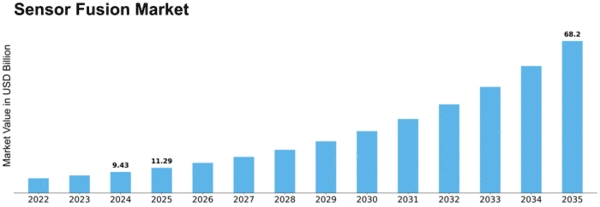
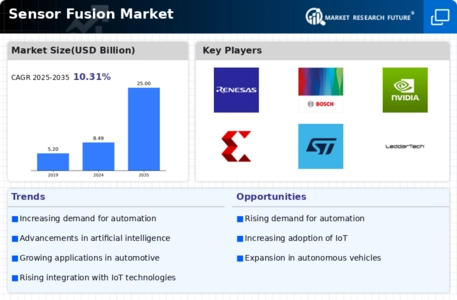
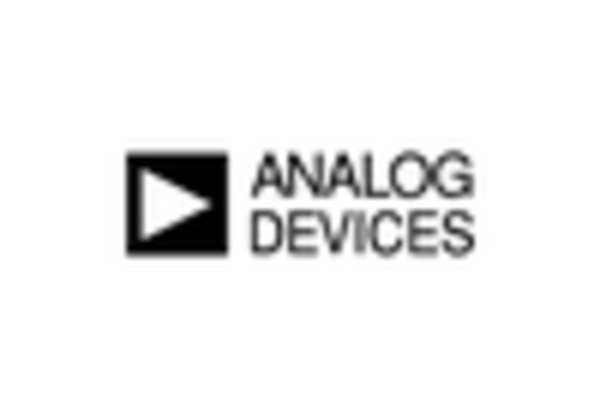
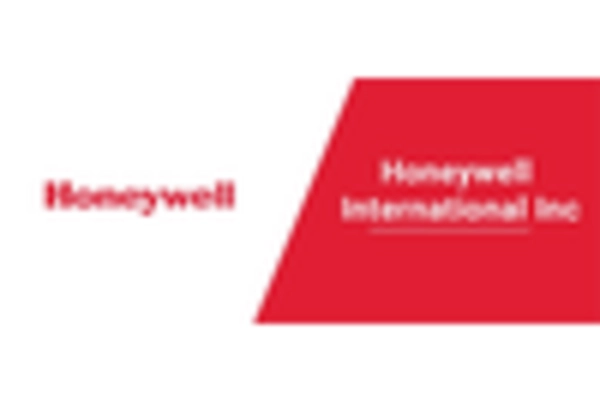
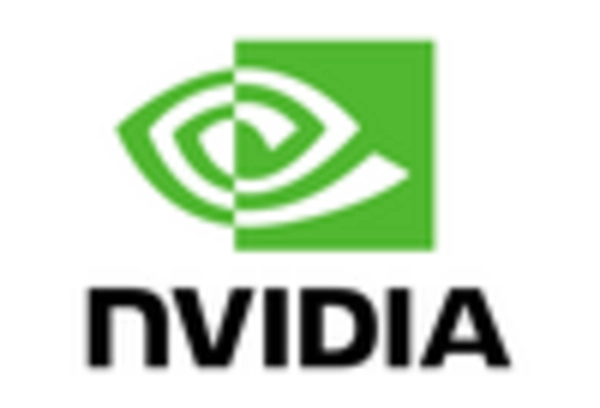
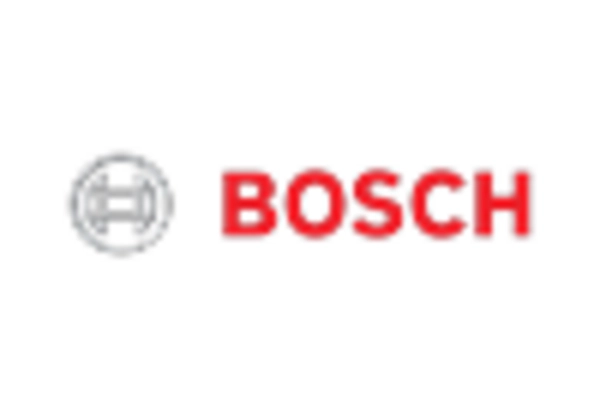
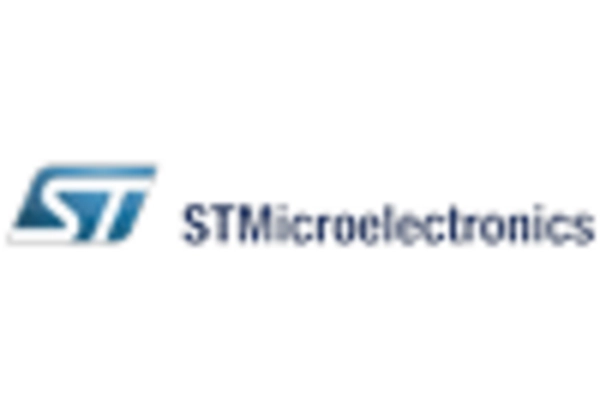
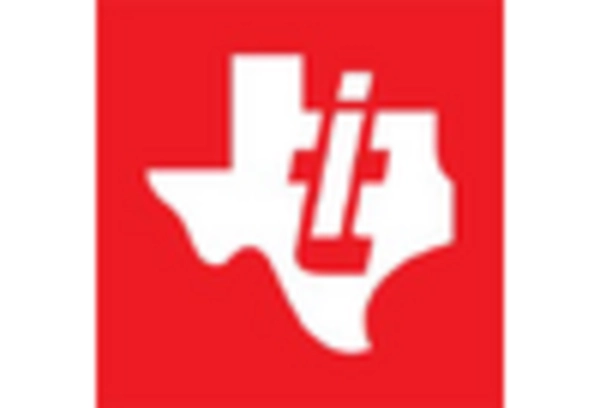









Leave a Comment